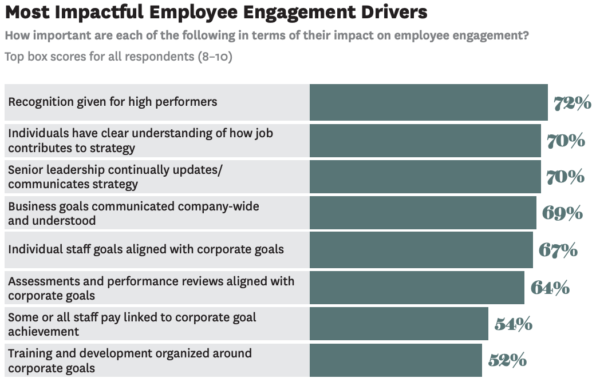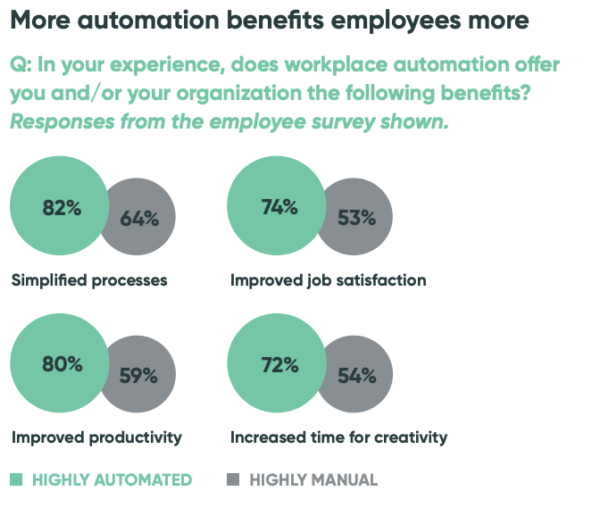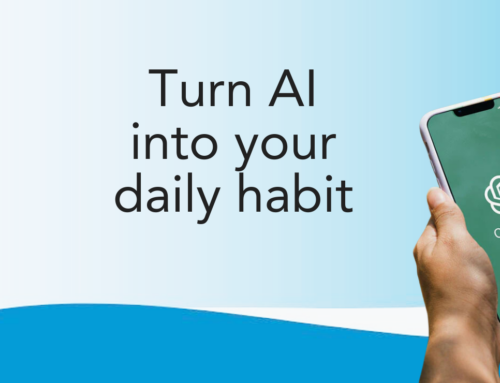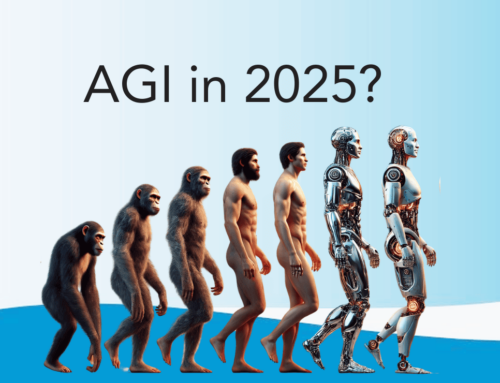
One of the most talked-about themes in our industry today is how to improve the customer experience (CX). This discussion is both healthy and necessary to grow your business for today and tomorrow.
One area that has a tremendous impact on improving the customer experience, which hasn’t really been part of the CX narrative, is employee engagement.
A study performed by the Temkin Group found an impressive correlation between customer experience and employee engagement. Companies who are customer experience leaders have 1.5 times more engaged employees than those companies who lagged in customer experience.
This correlation makes sense, right? Real estate is a relationship business which means customers expect every interaction with a brokerage to be exceptional. There is a lot of activity within a brokerage that touches and impacts the customer. Staff handles a lot of these activities, and the outcomes affect the customer’s panorama of the company.
As we look at a few technology tools to improve employee satisfaction and build exceptional CX, there is one important note that needs to be addressed.
Delivering exceptional experiences – with customers and employees – is a cultural and not a technology problem. Technology is only of value when used in its practical application in supporting an organization’s culture.
There are many articles on what makes employees engage with a company. We will explore the top two challenges.
Communication and Information
You and your partner finished the last few beans of coffee before leaving for work in the morning. On your way home, you decided to stop to pick up a bag of coffee. You arrive at home, and notice your partner also picked up a bag of coffee.
While having two bags of coffee is not the end of the world, the inefficiency of two people performing the same task is real. This scenario, or the opposite – nobody picks up the bag of coffee – occurs in business all the time. With a little communication and shared information, only one person would have purchased the bag of coffee while allowing the other person to perform a different task.
A Harvard Business Review survey of business leaders ranked exceptional communications third in rating a company’s success. In the same study, internal communication and sharing of information drive engagement with employees.

Companies that don’t communicate their goals effectively allow their staff to feel less valued and therefore staff becomes less engaged.
Process and Workflow
Over 6,000 knowledge workers who participated in a 2018 survey by SearchNow noted only three out of ten companies are automated or highly-automated in their workflow automation. In real estate, there are many companies like DotLoop, Skyslope, zipLogix, and TransactionDesk which dedicate their focus on digitizing workflow between the customer, agent, and brokerage. There is a lack of digitizing the internal workflow that staff performs on a daily basis.
Interesting note from the same study. 74% of employees from highly-automated companies have seen improved job satisfaction – a significant difference from 53% of employees from highly-manual companies. The survey also shows that when a business objective is to provide better employee and customer experiences, 61% of highly-automated companies are extremely effective in achieving their goal. All other companies were only 27% extremely effective.

How to get started with improving workflow
Every company has its own unique way to operate. Downloading a standard template and filling in the blanks is not available.
Start by documenting essential operation procedures/processes in Excel, PowerPoint, or Keynote.
Don’t be overwhelmed and use the “keep it simple” approach. Start with one process such as onboarding agents, staff, agent assistants, or ancillary business staff.
Document the following:
- Define the key result of the procedure.
- Department
- Activity/Task
- Type of task – is it manual or has it been automated. If automated, document how it is automated, what system performs the automation, and when does the automation occur, and what information does the automation require to run successfully.
- Owner of the activity/task
- How long to complete the activity/task
- Next activity/task in sequence to achieve the key result
Word of warning…There is a pitfall in this method. It is easy to find a tangled web of workflows that interact with each other. Stay focused on one workflow process and document those interactions individually and completely. Once completed, select a different workflow to record. You will be surprised to find synergies between workflows, the required information, and who is responsible for the activity.
Tools
There are some tools that make it easy for the staff to create the automation or document the workflow. Others may require a little bit of technology help to script or program some of the automation.
In the collaboration and information area, we previously discussed two tools, Microsoft Teams and Slack. These tools can also assist in documenting workflow processes, automation of some of those processes, and kicking off notifications.
I recently demoed a product, which offered some unique value add to the discussion of workflows. Several years ago, a product called Yapmo for real estate looked promising. The product positioned itself as a brokerage Intranet with collaboration and information sharing functionality — Facebook on steroids.
A few years ago, Yapmo rebranded as Konverse. They now serve different vertical markets and have expanded some of their functionality. They still offered a center for collaboration and information sharing, but also have policy management and onboarding process features. Another feature is workflow management and assignment.
Conclusion
Admittedly, workflow process and communication strategies are not easy, and most of the time these tasks are put on the back burner. Unfortunately, in today’s world of delivering exceptional consumer experience as a company, employee’s must be engaged as well. Changing culture is difficult but losing customers because the competition offers a better customer experience is worse.
Dr. W. Edwards Deming Kaizen Principle – continuous improvement – asserts it is everyone’s job to make continuous incremental improvements. A process to effectively and efficiently achieve quality. It was Dr. Deming’s principles, which led Japan to become a world leader in car manufacturing.
In real estate, we can learn from this knowledge to continually improve our operations and build cultures of engaged employees who deliver great CX.




